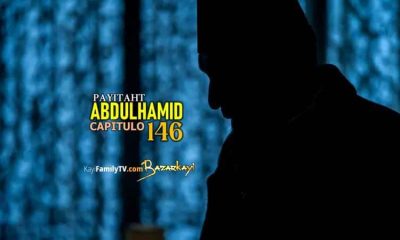Osmanli Devleti
Understanding Sultan AbdulHamid Han
Remembering with Respect and Understanding Sultan AbdulHamid Han
For many years we have looked at our own history through the window of others. For example, during the Sarıkamıs operation, ninety thousand soldiers froze to death without firing a single gun, we said.
However, this figure was the propaganda discourse of the Russians. So it was a lie. Even the number of our soldiers who participated in the operation was not that much. If our soldier didn’t fire a gun in Sarıkamıs, how could the loss of the Russians be thirty-two thousand?
This was also the case of Sultan AbdulHamid Han. For many years he was looked at from the eyes of his enemies and the west. This is unfortunately made as an official discourse.
Now the seal is in the hands of those who call Sultan Abdülhamid Han as “Great Han” We have the proverb: Truth surely wins. Lie cannot live long.
Sultan AbdulHamid Han’s life is really touching. His priority was to ensure the unity and solidarity of the nation as the Sultan; and of the ummah as the Caliph.
It was to try to prevent the colonialists from conquering Islamic countries. It was to prevent British, French and Russian expansionism. For thirty-three years he struggled for this. (Inspired by Assoc. Prof. İbrahim Kalın’s book, Öteki ve Ötesi.)
The decree of Allah. AbdulHamid desperately had to watch the loss of Rumelia during the Balkan War; the fall of our big cities such as Baghdad and Jerusalem during the Jihan War. Perhaps it can be a consolation: On February 10, 1918, he deliberately rested because of knowing that Mosul, Damascus and Aleppo was ours.. but it was not. If we think about that Sultan Reşad passed away in the same year (3 July), we can understand his deep sorrow in the face of the losses. The state was dismembered, the nation fell apart, and the ummah was in captivity of the imperialists.
***
Sultan AbdulHamid Han ruled our country for thirty-three years under harsh conditions and between tough enemies. Along with him, the era of the ‘Great Sultan’ ended.
Despite all the black propaganda, his effect and memory have lived up to the present day. It is true that a great deal of effort has been made to erase him from national memory.
Even the settlements having the name of Hamidiye got their share of this anger. Hamidiye was changed as Mesudiye.
I am a person who likes to visit the homeland rather than going outside. The Ottoman Empire invested heavily in European lands. We know that even Bolu, right next to Istanbul, was considered a place of exile. This is why great works in many towns of Anatolia belongs to Seljuk and the Principality period. Sultan AbdulHamid Han saw the future and attempted to revive the territory of Anatolia. He almost formed the defense line. Yes, foresight. I’ve seen traces of this effort everywhere I go. From Kastamonu to Sivas and Söğüt.
Today, many buildings used as schools, government buildings, museums, hospitals is all his works. He did all this despite the heavy debt burden. This service of his alone is enough to remember him wwith utmost respect.
AbdulHamid came to the throne during difficult years. Those who mistook the security policy he followed as restrictions and pressures on freedoms soon experienced what the real captivity itself was, and they repented. The life of our national poet is evident as a painful document.
We can easily say that Sultan AbdulHamid’s contribution to our country is much more than that of many prime ministers and presidents. Comparison cannot be made.
***
February 10 was the 100th anniversary of Sultan AbdulHamid Han. An important event was held at the Yıldız Palace with the participation of our President Recep Tayyip Erdoğan: Understanding Sultan AbdulHamid.
Carefully prepared speeches, albums and exhibition. The art director of the event was Harun Tan. First we visited the exhibition. There were AbdulHamid`s special items such as his seal, amber rosary, wallet, teacup, walking stick, box, carpentery tools, writing set, envelope opener.
Some of the edicts drew our attention. Here is one of them: “In the examination it was understood that Lady Ayse who worked for two years in Thessaloniki as a soldier with the name of Aydınlı Köse Mehmed was a girl. She was brought to Istanbul. It was decided to pay her 300 liras per month by state treasury and 2000 liras as Padishah’s gift. ”
What impressed me the most was the maps of Palestine and Jerusalem and Kubbetü’s Sahara model, which were among the special belongings of Sultan AbdulHamid. As I remembered that he died two months after Jerusalems fall, this saddened me.
We know of the Sultan’s deep interest in books and photographs. His passion for learning and the importance given to education as a result. The exhibition successfully reflected this characteristic of AbdulHamid.
Our nation cannot do without flags. I was excited to see the flags of Ertuğrul Süvari Regiment and the 53rd Hamidiye Regiment. Sultan AbdulHamid’s great interest in these regiments is obvious.
In his speech, President Erdoğan said “Although the form of governance has changed, the essence and spirit of our nation has remained the same ” We are understanding this truth day by day.
There are people who want to start our country’s history from 1923. My grandfather was born in 1910. This small example itself shows that this is not possible.
Osmanli Devleti
The Clock Towers From The Archive Of Sultan Abdul Hamid
The Clock Towers From The Archive Of Sultan Abdul Hamid
The clock, which provided great convenience to people with its invention, was located in the city squares at a size and height that everyone could see before it got smaller and went into pockets. Although they were built in the West, these historical buildings, which became works of art in the East, were the most striking architectural works of the cities. On the 25th anniversary of Sultan AbdulHamid’s accession to the throne, it spread to the interior of Anatolia, with the governors sending an edict to build a clock tower. We have compiled the photographs of clock towers that have witnessed centuries from the archive of Sultan AbdulHamid.

Amasya Clock Tower
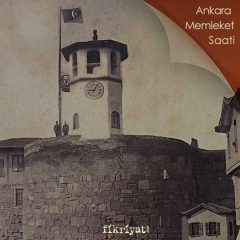
Ankara Clock Tower
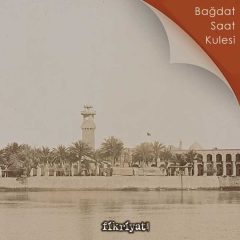
Baghdad Clock Tower
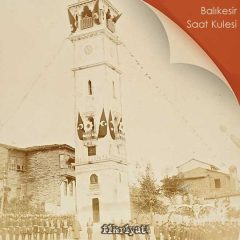
Balıkesir Clock Tower
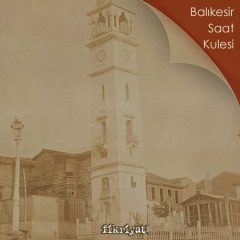
Balıkesir Clock Tower
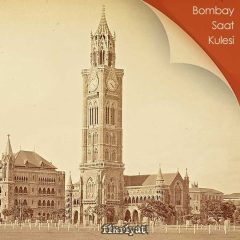
Darülfünun building and clock tower in Mumbai, India
Architectural works of the period reflect this feature because they were built in baroque, empire, eclectic and neo-classical styles. Clock towers are usually plain stone structures. Clock towers in Tophane, Yıldız Palace, Dolmabahçe, İzmir and İzmit are the most ornate.
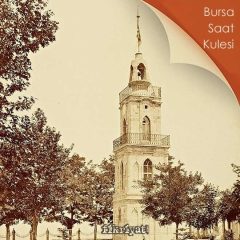
Clock tower in the garden of Osman Gazi tomb
The clock tower located in Tophane Park in Bursa; It was first built during the reign of Sultan Abdulaziz. It was demolished at an unknown date, however, until the 1900s. Its construction started again in 1904 and was completed on August 31, 1905. It was put into service with a ceremony by the Governor Reşit Mümtaz Pasha on 31 August 1906 in honor of Abdülhamid’s accession to the throne.
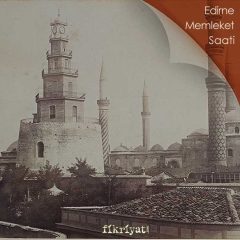
Edirne Clock Tower
The tower, which became known as the “Macedonian Clock Tower” after the wooden floors and clocks that had been built by Hacı İzzet Pasha, one of the governors of Edirne, on the tower in 1866-1867, was severely damaged in the 1953 earthquake.

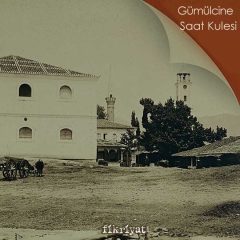
Gümülcine Clock Tower
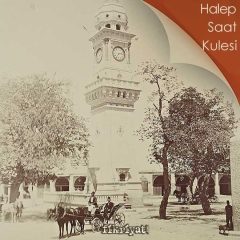
Halep Clock Tower
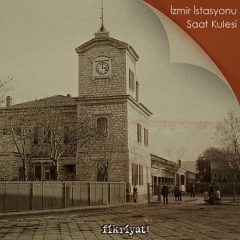
İzmir Station Clock Tower
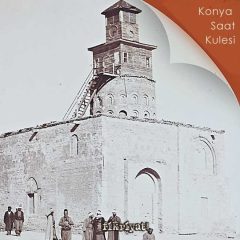
Konya Clock Tower
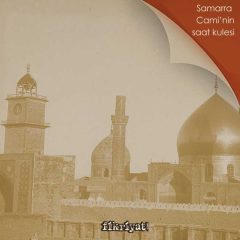
Samarra Cami (Mosque) Clock Tower
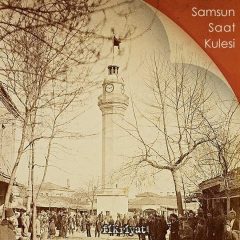
Samsun Clock Tower
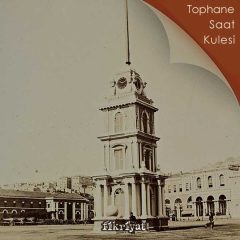
Tophane Clock Tower
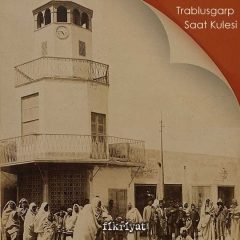
Tripoli Clock Tower
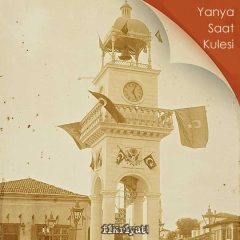
Yanya Clock Tower
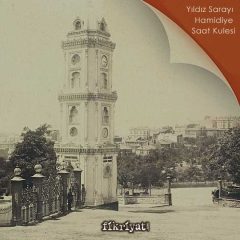
Yıldız Palace Hamidiye Clock Tower
Hamidiye Clock Tower is located in Yıldız district of Beşiktaş district of Istanbul. As it can be understood from the tugra on the entrance gate, it was built by AbdulHamid II between 1889 and 1890. The architect of the clock tower, which was built with four sides (octagon) with broken corners, is Sarkis Balyan. There are four inscriptions on the first floor of the tower, a thermometer and barometer on the second floor, and a clock room on the top floor. There is a compass on the decorative roof of the clock tower and a weather vane on its top.
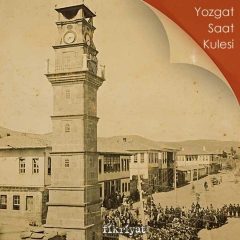
Yozgat Clock Tower
Osmanli Devleti
COUNTRIES RULED FOR YEARS BY THE OTTOMAN
COUNTRIES RULED FOR YEARS BY THE OTTOMAN!
1. Turkiye (…)
2. Bulgaria (545 years)
3. Greece (400 years)
4. Serbia (539 years)
5. Montenegro (539 years)
6. Bosnia and Herzegovina (539 years)
7. Croatia (539 years)
8. Macedonia (539 years)
9. Slovenia (250 years)
10. Romania (490 years)
11. Slovakia (20 years) Ottoman name: Uyvar
12. Hungary (160 years)
13. Moldova (490 years)
14. Ukraine (308 years)
15. Azerbaijan (25 years)
16. Georgia (400 years)
17. Armenia (20 years)
18. Southern Cyprus (293 years)
19. Northern Cyprus (293 years)
20. Southern lands of Russia (291 years)
21. Poland (25 years)-protection- Ottoman name: Lehistan
22. The southeast coast of Italy (20 years)
23. Albania (435 years)
24. Belarus (25 years) -protection-
25. Lithuania (25 years) -protection-
26. Latvia (25 years) -protection-
27. Kosovo (539 years)
28. Vojvodina (166 years) Ottoman name: Banat
29. Iraq (402 years)
30. Syria (402 years)
31. Israel (402 years)
32. Palestine (402 years)
33. Urdun (402 years)
34. Arabia (399 years)
35. Yemen (401 years)
36. Oman (400 years)
37. United Arab Emirates (400 years)
38. Qatar (400 years)
39. Bahrain (400 years)
40. Kuwait (381 years)
41. Western lands of Iran (30 years)
42. Lebanon (402 years)
43. Egypt (397 years)
44. Libya (394 years) Ottoman name: Tripoli
45. Tunisia (308 years )
46. Algeria (313 years)
47. Sudan (397 years) Ottoman name: Nubia
48. Eritrea (350 years) Ottoman name: Habes
49. Djibouti (350 years)
50. Somalia (350 years) Ottoman name: Zeyla
51. Kenyan beaches (350 years)
52. Tanzanian beaches (250 years)
53. Northern regions of Chad (313 years) Ottoman name: Reşade
54. Part of Niger (300 years) Ottoman name: Kavar
55. The northern lands of Mozambique (150 years)
56. Morocco (50 years) -protection-
57. Western Sahara (50 years) -protection-
58. Mauritania (50 years) -patronage-
59. Mali (300 years) Ottoman name: Gat Kazası
60. Senegal (300 years)
61. Gambia (300 years)
62. Guinea-Bissau (300 years)
63. Guinea (300 years )
64. Part of Ethiopia (350 years) Ottoman name: Habeş (Abyssinian)
Although not officially located within the borders of the Ottoman Land borders, the places that are actually connected to the Caliphate are:
65. Muslims of India -Pakistan-
66. East India Muslims -Bangladesh-
67. Singapore
68. Malaysia
69. Indonesia
70. Turkestan Khanates
71. Nigeria
Osmanli Devleti
INEGOL ITS EARLY OTTOMAN CONQUEROR
Inegöl & its early Ottoman conqueror, Turgut Bey
(Translated from the official Inegöl City & Inegöl Chamber Of Commerce & Industry webpages & also some available translations of early chronicles)
If you want, you can skip sections on ancient history of İnegöl & go straight to early Ottoman history [that is being showcased ın Kuruluş Osman Season 3]
About the Name of İnegöl
The name of İnegöl in the Byzantine Period was Angelacoma. However, a source has not yet been found to confirm the claims that the name İnegöl is the distorted pronunciation of Angelacoma.
In the sources, it is seen that the name İnegöl was written in different forms. However, it is known that in most of the Ottoman sources it was written as Ayna-Göl or İne-Göl.
Evliya Çelebi, tells in his travel book that İnegöl is derived from Ezinegöl; He narrates that İnegöl took the name “Ezinegöl” because it was conquered on Friday, that is, Ezine day according to the parlance of those days, and that in time, the “Ez” part at the beginning was removed and it was called only İnegöl.
Archeological Surveys.
The history of İnegöl, according to the findings of the archeological surveys carried out in 1847 and 1942, dates back to 3000 BC. There are 6 mounds of archeological interest in İnegöl, namely Cumatepe, İnegöl 2, Şıbalı, Boğazköy, Palangatepe and Kurşunlu.
Today, the mound in the middle of the city, around the municipality headquarters, is called Cumatepe.
During excavations carried out by Bursa Archeology Museum in 1999 on the Cumatepe mound in the city center, mixed aged objects ranging from the Late Ottoman to the Chalcolithic Period were found.
Inegol in Antiquity
İnegöl has been invaded frequently due to its strategic location on military and commercial routes since ancient times.
It has been determined that Phrygians, Lydians, Persians and Macedonians successively ruled in İnegöl, which has a history of 5000 years. In 74 AD, it came under the rule of the Roman Empire.
And after the split of the Roman Empire in 395 AD, İnegöl passed under the rule of the Eastern Roman Empire (Byzantine). It continued to be under Byzantine rule as a Tekfurluk center until the establishment of the Ottoman Principality by Osman Ghazi.
The Establishment of the Ottoman State and the Conquest of İnegöl
Osman Bey, who became the head of the principality in 1281 upon the death of his father Ertuğrul Bey, began the conquests against Byzantium soon after.
[Official Webpage from Inegol Chamber Of Commerce & Industry also adds that Osman Bey initially followed a policy of maintaining cordial, good working, relationships with the feudal landlords in Bursa, Bilecik and surroundings. Except with Ayah Nikola.]
In a battle with Ayah Nikola, the battle of Ermeni Beli in 1284, he and his men had to retreat after the martyrdom of Baykoca, the son of his brother, Savcı Bey.
Baykoca was the first martyr of the dynasty and his grave is in Hamzabey District of İnegöl.
Despite the retreat (and Bayhoca’s martyrdom), Ottoman history began with this first military operation.
The foundations of a state that would rule for six centuries were laid in the quadrangle of Söğüt, Bilecik, Domaniç and İnegöl in a short period of time.
After a while, Osman Bey raided Kulaca Castle near İnegöl and conquered the castle. The year of this conquest event was recorded as Hijri, 684, Gregorian, 1285 in the chronıcles of Aşıkpaşazade, and it was stated that this conquest was the first conquest of Osman Gazi.
[It is also mentioned in some early chronicles that deeply affected by Bayhoca’s martyrdom, Osman Bey never visited Angelacoma (İnegöl) and surroundings for approximately 14-15 years, while continuing with conquering other castles – the Karcahisar (İnönü Castle), Bilecik and Yarhisar Castles. A great many friends of feudal landlord of Angelacoma were thus erased from history]
Concerned about these developments, İnegöl tekfuru, Nikola, formed an alliance with other tekfurs to eliminate Osman Bey.
Osman Bey, becoming aware of this alliance, assigned the conquest of İnegöl to his comrade, Turgut Alp.
[in many early sources, Turgut Alp is referred to as Osman Bey’s dear friend & comrade – which make it reasonable to assume that age wise, he ‘might’ have been Osman Bey’s contemporary. This is the more widespread understanding & the reason why in the earlier TRT series on Osman Bey, he was shown as Osman Bey’s contemporary & friend]
With the siege plan implemented by Turgut Alp, İnegöl was finally conquered in 1299. After this conquest, Osman Bey handed over the administration of İnegöl and its surrounding villages to Turgut Alp.
[[According to early Ottoman sources, Turgut Alp was also with Osman Bey during the conquest of ‘Yarhisar’ and was then commissioned with the conquest of Inegol. In these sources, it is also mentioned that Turgut Alp first sieged the city and then Osman Bey came to his aid. It was also mentioned that during the conquest of Inegol, the city’s Tekfur, Aya Nikola, was executed and thereafter, Osman Bey assigned the administration of Inegöl & ıts surrounding villages to Turgut Alp]
The region where Inegol’s Kirles (Paşaören), Süle, Genci (Turgutalp Village), Gelene (Kayapınar) and Kıran Neighborhoods are located were called the Turguteli-Turgutlar district.
Turgut Alp, who also contributed significantly in the subsequent conquest of Bursa by Sultan Orhan, passed away in the village of Genci (today’s name Turgut alp Köy Mahallesi), where he had settled in his later years.
His mausoleum is on a large hill overlooking İnegöl in Turgut Alpköy Mahallesi, and a memorial ceremony is held around the mausoleum every year on the day of Hıdrellez.
The naming of a neighborhood, a village, an Anatolian High School and a mosque in İnegöl after Turgut Alp is an indication of the place this highly successful early Ottoman commander holds in the collective memory of generations that came after him.
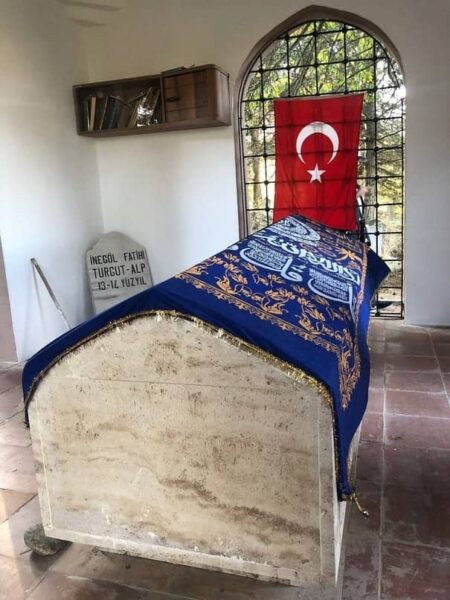
Turguts Burial Place























